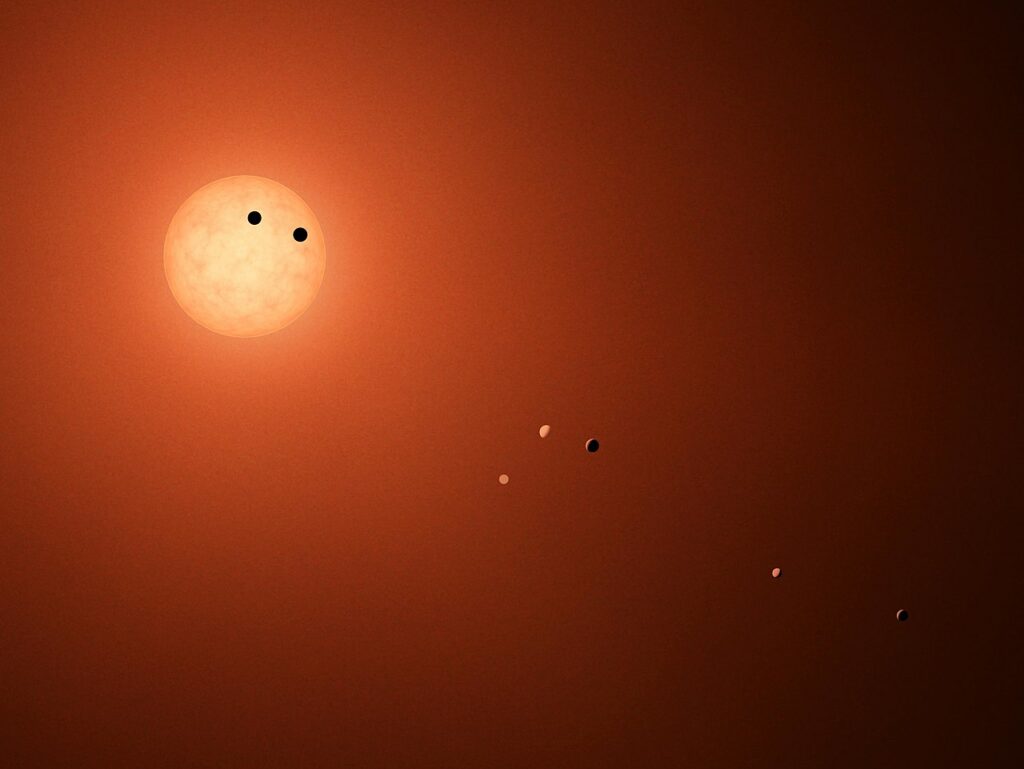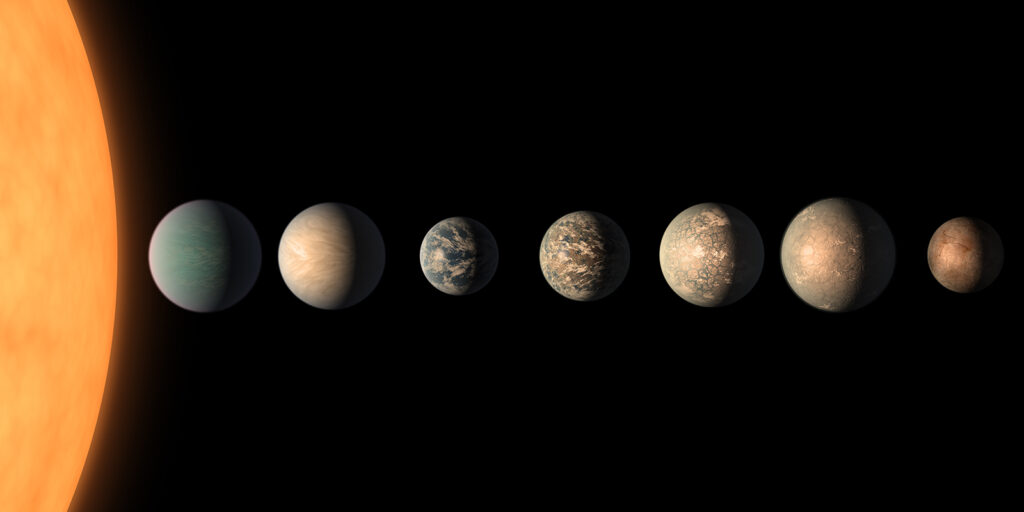The interiors of exoplanets in the TRAPPIST-1 system may be warming up due to high stellar activity. This is evidenced by the results of a study conducted by a team of German scientists.

TRAPPIST-1 is one of the most famous star systems. There are at least seven rocky exoplanets orbiting around this red dwarf. At the same time, the orbits of three of them at once pass in the habitable zone. This means that they receive enough heat from their star so that, if there are suitable atmospheric conditions, liquid water can exist on their surface.
It is not surprising that the TRAPPIST-1 system is the subject of a large number of scientific studies. Their purpose is to assess its long-term stability, as well as its potential viability. Since red dwarfs are very active stars that often produce powerful flares, many researchers are quite skeptical about the prospects for life in TRAPPIST-1. In their opinion, under the influence of stellar activity, exoplanets in such systems can completely lose their atmosphere.
However, the authors of the new study, the results of which were published in The Astrophysical Journal Letters, looked at this question from a different angle. They tried to assess the impact of high stellar activity on the bowels of exoplanets. To do this, scientists resorted to the help of modeling.

The model created by the researchers showed that if a rocky exoplanet has its own magnetic field, then high stellar activity will induce currents in its interior, which will lead to their heating. According to scientists, the heat released during this process can be comparable to the energy generated during the decay of radioactive elements in the earth’s mantle and core.
Additional heat will contribute to higher geological activity. First of all, it will manifest itself in volcanism. According to scientists, this is not necessarily bad news. Thus, gases are released into the atmosphere during eruptions. They can compensate for atmospheric losses caused by constant flares on the red dwarf. In addition, eruptions change the surface environment — and under some circumstances, these changes can contribute to the emergence of life.
In any case, the results of the study show that the influence of active stars on planets is not limited only to the atmosphere, but is much more complex. And researchers trying to assess the viability of extrasolar worlds should take this into account.
Recall that astronomers recently found two giant exoplanets near sun-like stars.
According to https://phys.org
Follow us on Twitter to get the most interesting space news in time
https://twitter.com/ust_magazine

